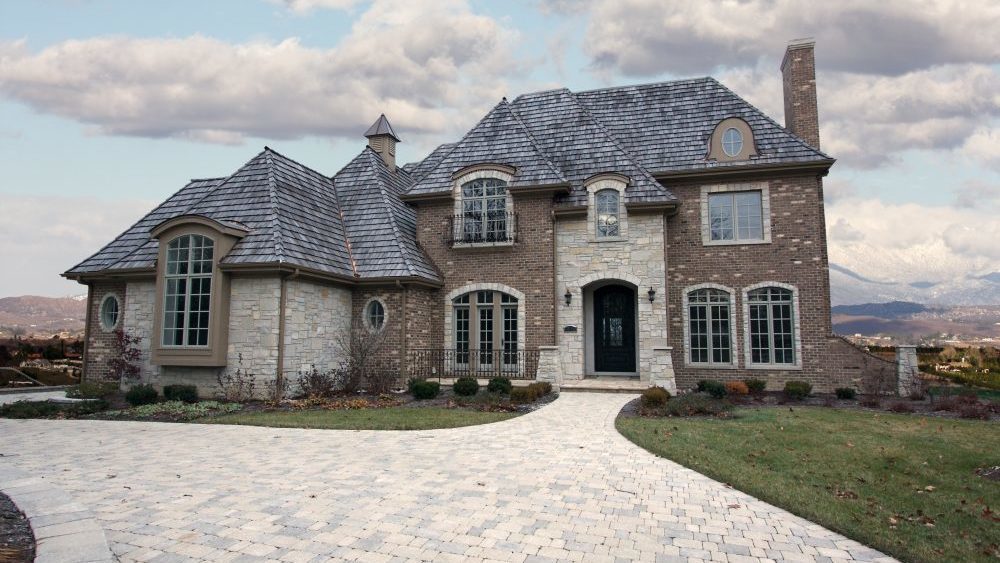The typical driveway, let’s face it, tends to be a bit boring. Made of concrete or asphalt, they provide a humble entry to the garage. But in newer neighborhoods, especially those with larger lots, driveways are providing a place to add a little pizzazz and curb appeal.
Driveway configuration. The size and shape of the lot will dictate the configuration of the driveway. The larger and wider the lot, the more potential exists for a grander entrance.
In most tract-home subdivisions, where space is tight, the garages tend to be forward facing and the driveways are typically short and straight. But bigger lots provide room for a side-entry garage, a circular drive, or in the case of an extra-large lot, a sweeping or curving driveway.
Tip: If considering a circular drive, you’ll significantly reduce the size of your lawn and landscaping, which will also reduce yard maintenance. Soften the look by using a more decorative driveway material, such as stone, or pressed or painted concrete.
Beyond concrete and asphalt. Interlocking pavestones are an attractive, but labor intensive, alternative driveway surface. Pavers come in a variety of colors and shapes, and present a handsome look from the street. Similar would be the use of individualized stone. Brick driveways are another choice. Stone and brick drives are pricey, running $16 to $20 per square foot, depending on the quality of materials and intricacy of design.
If stone isn’t your thing, decorative concrete, which can be stained, textured or impressed with patterns, might appeal to you. A simple look is to have rock salt seeded into the top of the freshly laid, still wet concrete. Once dry, it is hosed off. The salt dissolves and leaves a pitted pattern in the surface. Stamped concrete has the look of a stone-laid driveway, but in reality, is just poured concrete with a stone-like pattern impressed upon it while the concrete is still soft. The individual “stones” can then be colored for a realistic look. Stenciled concrete is similar. A stencil is laid upon the concrete and color is used to resemble brick or stone. Dying or coloring turns the concrete into an attractive color, with swirls and highlights. The best results are achieved when the coloring is mixed into the concrete, not just sprayed on the surface. These methods run between $8 and $25 per square foot.
Yet another look involves having a fine pebbled epoxy surface troweled onto the existing concrete. This provides a beautiful yet durable look with little maintenance required. This process can cost up to $12 per square foot.


